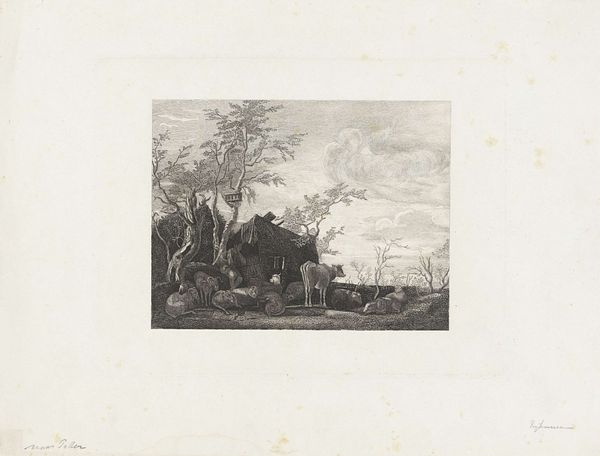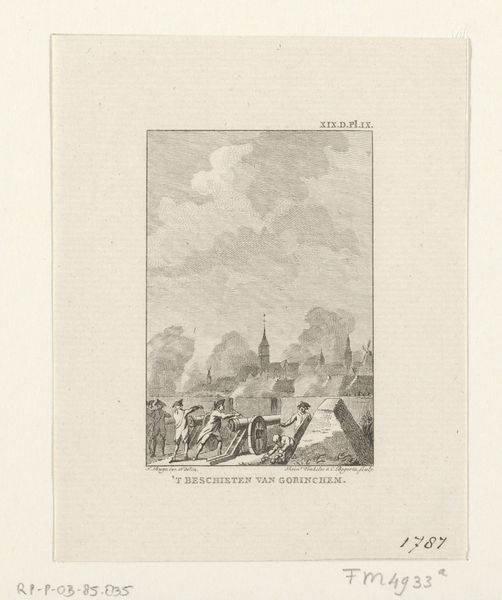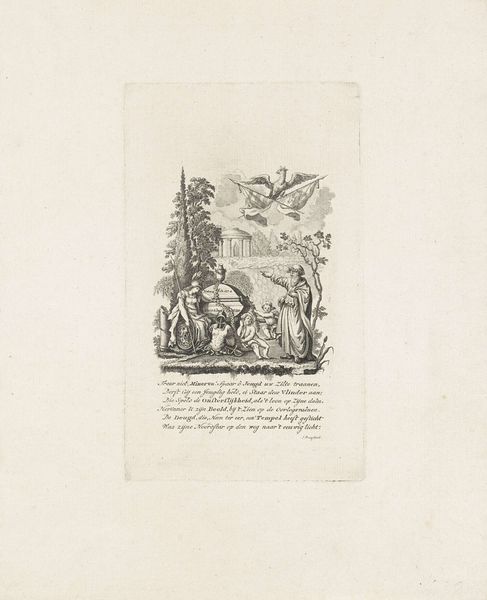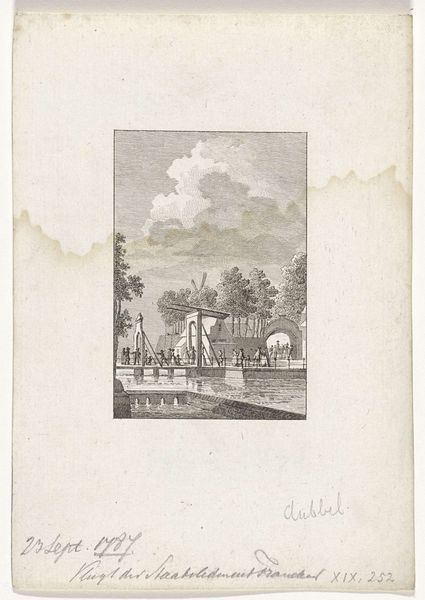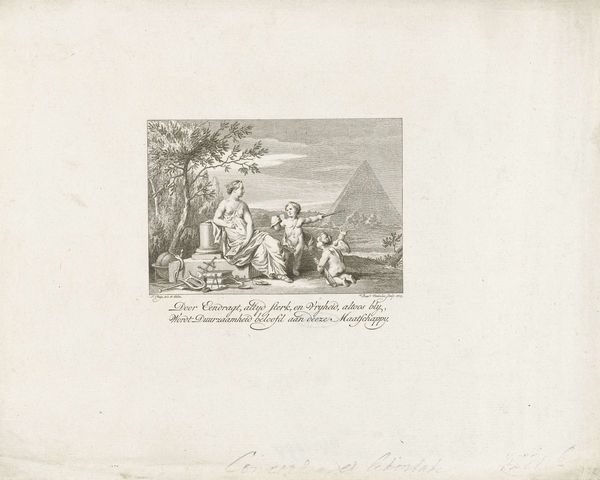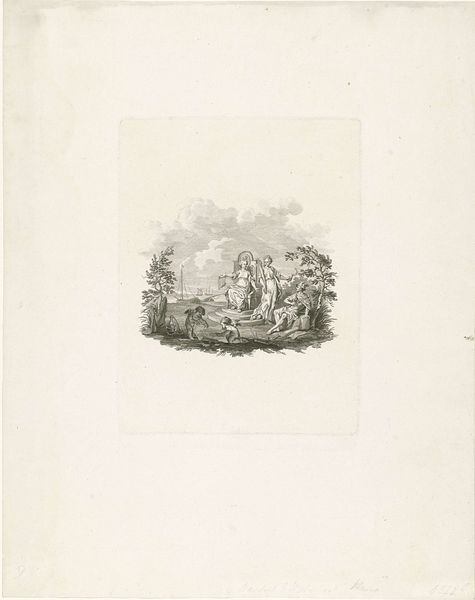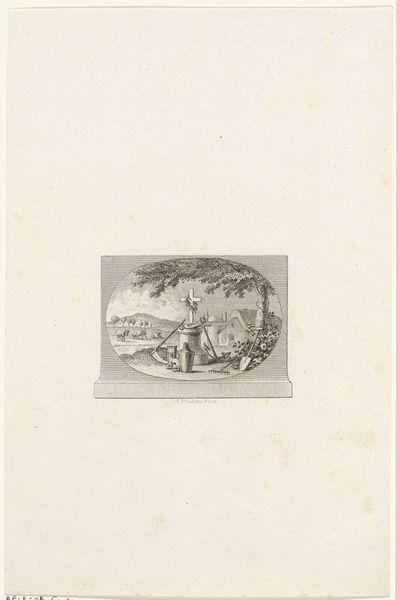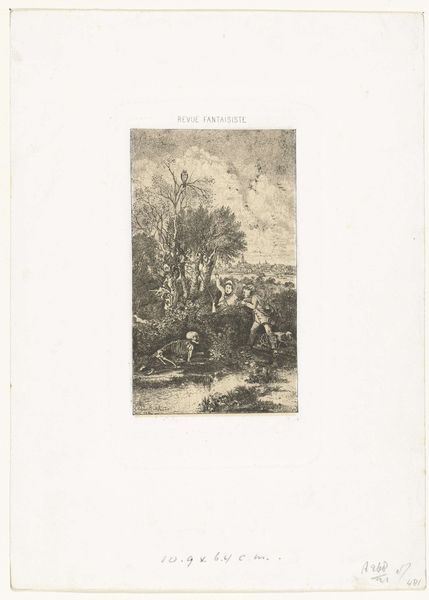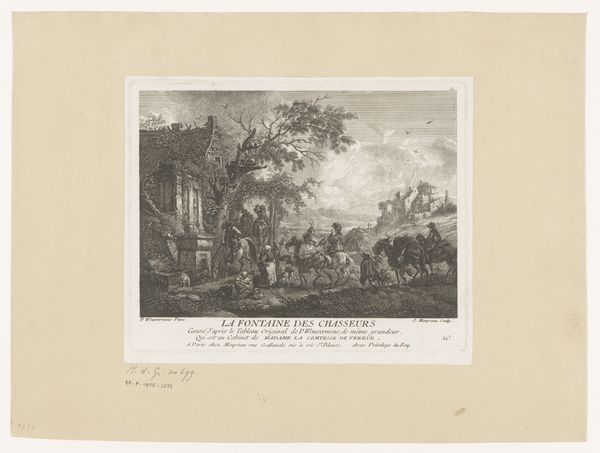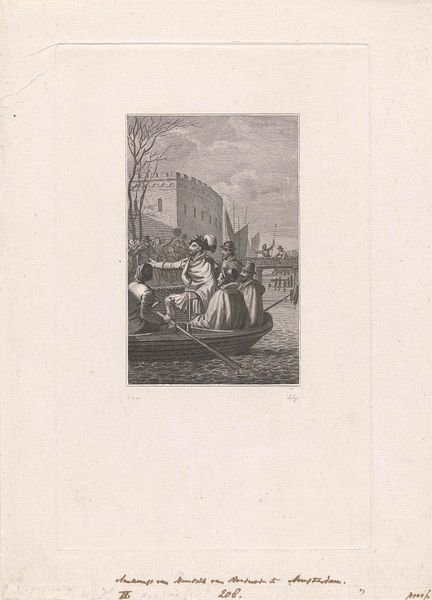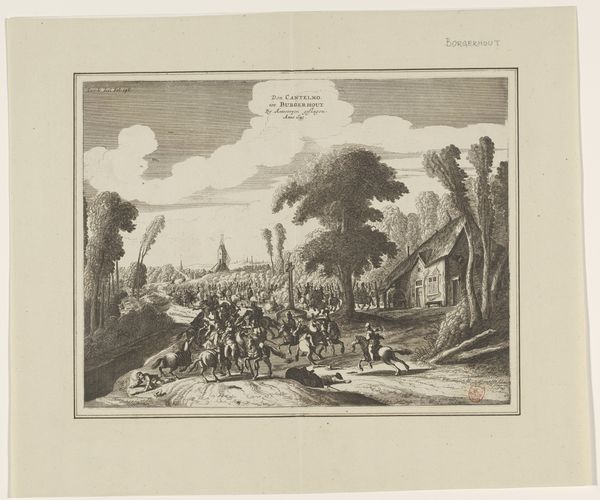
De geesten van Willem van Oranje, prins Maurits en de Michiel de Ruyter aanschouwen op de grenzen de verdedigers van de Zeven Provincien, 1831 1831 - 1840
0:00
0:00
willemcharlesmagnenat
Rijksmuseum
print, engraving
# print
#
landscape
#
romanticism
#
history-painting
#
engraving
Dimensions: height 242 mm, width 169 mm
Copyright: Rijks Museum: Open Domain
Curator: Here we have "The spirits of William of Orange, Prince Maurits and Michiel de Ruyter watch over the defenders of the Seven Provinces on the borders", a print made between 1831 and 1840, credited to Willem Charles Magnenat. It’s currently held in the Rijksmuseum collection. Editor: My first impression is a powerful sense of stillness juxtaposed with brewing conflict. There's a stark contrast between the spectral figures overseeing the camp and the palpable sense of apprehension emanating from the guards clustered around the fire. Curator: Let’s consider the engraving itself as a material object. Prints like this served to disseminate specific historical narratives, shaping public opinion and fostering national identity through easily reproducible imagery. The lines are incredibly detailed for the period, almost photographic in capturing expressions, landscape elements and the soldiers' attire. Editor: Exactly. Look how the artist uses those detailed lines to imbue these historical figures with a distinct symbolic weight. William of Orange, Maurits, and de Ruyter, presented almost as guardian spirits, legitimize the current military efforts by connecting them to a glorious past. That distant burning cityscape serves as a constant reminder of potential consequences. Curator: It speaks volumes about the Romantic era’s obsession with national history and heroic narratives. By choosing printmaking, the artist engaged with the accessibility and affordability of images, consciously inserting this vision of national pride into the public domain. I find myself wondering about the engraver's labor – the intense focus and repetition involved in carving this scene onto a plate, multiplied in each impression struck. Editor: The scene certainly constructs a particular visual rhetoric. The iconography emphasizes Dutch naval prowess and military vigilance, framing it all within a landscape tinged with uncertainty. That single boat crossing from left to right really brings to light how fragile borders can be. Curator: Yes, and by emphasizing those figures of leadership from the past, the engraving encourages a continuation of patriotic ideals among viewers of the 1830s, reminding them of the material sacrifices that safeguard sovereignty. Editor: I’ve gained a fresh perspective appreciating how layered historical symbolism gets expressed here within this black and white landscape. Curator: Indeed. It truly underscores how even a "simple" print encapsulates complex relationships between artistic production and nationalistic narratives.
Comments
No comments
Be the first to comment and join the conversation on the ultimate creative platform.
